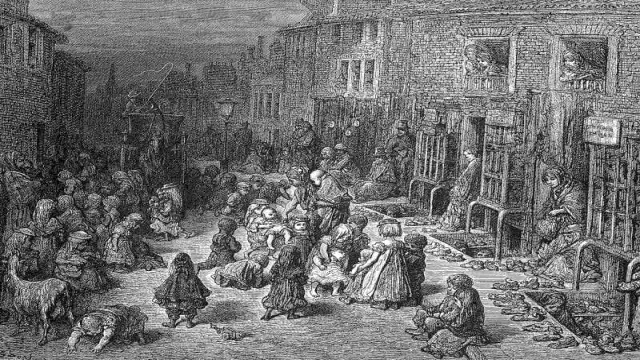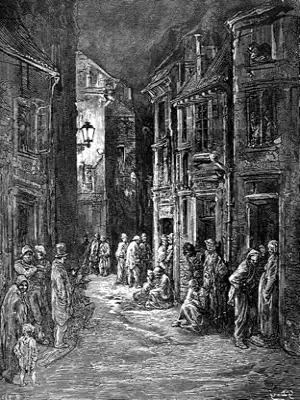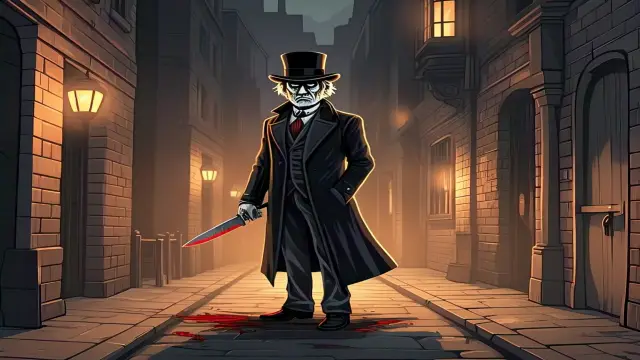The name Jack the Ripper sends shivers down the spine. It’s a name that has haunted history for over a century. Yet, we know almost nothing about the man behind it. Who was he? Where did he come from? Why did he commit such heinous crimes? These questions remain unanswered. What we do know is that his actions left an indelible mark on Victorian London, particularly in the grim streets of Whitechapel.
Who Was Jack the Ripper?
Jack the Ripper is a name given to an unidentified serial killer who terrorized London in 1888. The name itself is shrouded in mystery. It may have been a pseudonym he used, or it could have been a label created by the media. What we do know is that he was responsible for a series of brutal murders in the Whitechapel district.

The victims were primarily women, many of whom were prostitutes. The killings were marked by their savagery and precision, leading to widespread fear and speculation. Despite countless investigations, Jack the Ripper was never caught. His identity remains one of history’s greatest mysteries.
The Dark Streets of Whitechapel
Whitechapel in the late 19th century was a place of poverty, crime, and despair. It was a refuge for the poor, the desperate, and the displaced. The streets were narrow and dimly lit, filled with the sounds of clattering carts and the cries of street vendors. For many, it was a place where dreams went to die.

It was in this grim setting that Jack the Ripper chose to carry out his crimes. The district’s labyrinthine alleys and overcrowded lodging houses provided the perfect cover for his brutal acts. Whitechapel became synonymous with fear, and the Ripper’s presence turned it into a living nightmare.
The Victims of Jack the Ripper
The Whitechapel Murders are often linked to five canonical victims, though some believe there may have been more. These women, all sex workers, met gruesome ends at the hands of the Ripper.
- Mary Ann Nichols
Mary Ann Nichols was the first officially recognized victim of Jack the Ripper. Her body was discovered on August 31, 1888, in Buck’s Row. She had been brutally mutilated, with her throat slit and abdomen ripped open. - Martha Tabram: The second Whitechapel murder occurred on August 6, 1888, involving Martha Tabram, a 39-year-old woman known for her drinking habits. On the evening of a Bank Holiday Monday, she and her friend Mary Ann Connolly (known as ‘Pearly Poll’), met two soldiers and spent time in several pubs. Later, they separated with their companions, with Martha and a private going into George Yard. At around 4:45 am, John Reeves, a docker, discovered Martha’s body on a first-floor landing and alerted the police. Martha had been stabbed thirty-nine times, mostly in the chest and abdomen. Dr. Killeen, who conducted the post-mortem, estimated her death at around 2:30 am and noted the wounds were inflicted by a right-handed man. Despite police efforts, the soldiers fitting the descriptions of the suspects were never found.
- Annie Chapman
Annie Chapman was found dead on September 8, 1888, in Hanbury Street. Her injuries were even more severe than those of Nichols. Her uterus had been removed, suggesting a level of surgical precision that baffled investigators. - Elizabeth Stride
Elizabeth Stride’s body was discovered on September 30, 1888, in Dutfield’s Yard. Unlike the other victims, her body showed fewer mutilations, leading some to believe the Ripper was interrupted mid-act. - Catherine Eddowes
On the same night as Stride’s murder, Catherine Eddowes was found dead in Mitre Square. Her injuries were extensive, including facial mutilations and the removal of her kidney. - Mary Jane Kelly
Mary Jane Kelly was the Ripper’s final canonical victim. Her murder on November 9, 1888, was the most brutal of all. Her body was found in her rented room, horribly mutilated and disfigured.

The Investigation and Theories
The police launched an extensive investigation into the Whitechapel Murders, but they were hampered by the limitations of forensic science at the time. Despite numerous suspects, no one was ever charged. Over the years, countless theories have emerged about the Ripper’s identity.
Some believe he was a doctor or butcher, given the precision of the mutilations. Others suggest he was a member of the royal family or a wealthy individual who used his status to evade capture. While these theories are intriguing, none have been proven.
The Legacy of Jack the Ripper
Jack the Ripper’s crimes have left a lasting impact on popular culture. His story has been the subject of countless books, films, and TV shows. The mystery surrounding his identity continues to captivate people around the world.
But beyond the fascination, the Ripper’s crimes highlight the social issues of Victorian London. Poverty, inequality, and the plight of women in society are all themes that emerge from the Whitechapel Murders. The victims were more than just names; they were real people whose lives were cut short by a brutal killer.
Conclusion
The mystery of Jack the Ripper endures because it is a story of fear, intrigue, and unanswered questions. Who was he? Why did he kill? And why was he never caught? These questions may never be answered, but they keep us searching for the truth.
Whitechapel may no longer be the dark, foreboding place it once was, but the shadow of Jack the Ripper still lingers. His name is a reminder of a time when the streets of London were filled with fear, and the world was introduced to one of history’s most infamous serial killers.

